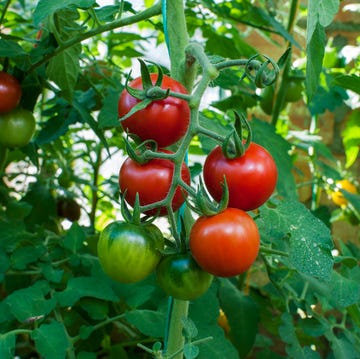9 Healthy Breads That Don’t Taste Like Cardboard
All the good stuff and all the flavor.

WE LOVE BREAD just as much as the next person, but it's clear the the beloved food doesn’t exactly have the best reputation when it comes to health. Don't let the carb-haters fool you though—there's healthy breads that can absolutely be a part your diet.
“Bread got a bad rap during the low-carb diet craze, but it can absolutely be a healthy part of your diet,” says Kim Yawitz, R.D. “Sure, some types of bread are loaded with calories, added sugar, sodium, and additives. But other types are rich in fiber, iron, B vitamins, and other essential nutrients that can make you healthier."
Science proves it, too: A 2020 study looked at adults who consumed whole grains, including dark breads, and discovered they had a significantly lower risk of developing type 2 diabetes over time.
Kaytee Hadley, R.D.N., C.P.T., reiterates that not all breads are nutritionally equal as many can be high in sugar and stripped of the naturally occurring nutrients found in whole grains. That said, bread can be a wholesome part of your diet so long as you find the right one.
Unfortunately for you, there are so many breads on the market and it can sometimes be hard to separate the junk from the good stuff. Thankfully, we did the grunt work for you. Ahead, what you should know when buying bread, and 9 healthy breads we love.
What to Look for When Buying Bread:
These simple guidelines from Yawitz and Hadley can help you make a nutritious choice when shopping for bread.
Watch for Buzzwords
Look for the phrases like '100% whole grains' or '100% whole wheat' on the label. These products tend to have more fiber and other essential nutrients than bread made with refined grains. 'Sprouted bread' is another helpful term to look for on labels. This phrase means “that the whole grains that have germinated, or sprouted, prior to baking, which causes the nutrients to be even more available to the body,” says Hadley.
Check the Fiber Count
Hadley says that a good rule of thumb is to aim for a minimum of 2 grams of fiber per slice of bread. “With whole grain and sprouted bread, the fiber content will naturally be higher, providing better blood sugar control and gut health benefits,” she says.
Make Sure There’s Little Added Sugar
“Sugars are sometimes added to bread to boost the yeast activity and flavor, but it’s best to keep it under 2 grams of added sugar per serving,” says Hadley.
Scope Out the Protein
Bread can be a surprising source of protein, too. Ideally, you want bread with at least 5 grams of protein a slice, says Yawitz.
Perri is a New York City-born and -based writer; she holds a bachelor’s in psychology from Columbia University and is also a culinary school graduate of the plant-based Natural Gourmet Institute, which is now the Natural Gourmet Center at the Institute of Culinary Education. Her work has appeared in the New York Post, Men's Journal, Rolling Stone, Oprah Daily, Insider.com, Architectural Digest, Southern Living, and more. She's probably seen Dave Matthews Band in your hometown, and she'll never turn down a bloody mary. Learn more at VeganWhenSober.com.


Things Designers Never Do When Designing a Kitchen

Cook Like Grandma: The Best Vintage Cookbooks

Don't Miss These Costco Summer Products

Dishwashers Contributes To Microplastic Exposure
















